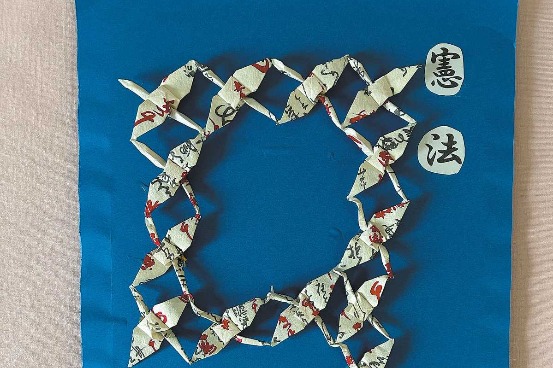One new tax could be a good thing

With all the talk of tariffs and levies, there's one potential tax that could end up actually saving lives.
The medical journal Lancet reports on China's action on salt consumption in its current issue and the news is good and bad.
Worldwide, heart disease continues to be the major cause of death or disability, and 80 percent of cardiovascular events happen in developing countries.
Raised blood pressure is a top risk factor and "excessive salt consumption is the leading cause of raised blood pressure", Feng He of the Wolfson Institute of Preventative Medicine and colleagues write in the journal.
Salt intake among most adults in most countries is about 10 grams a day. The World Health Organization thinks that should be reduced to 5 grams a day.
With a fifth of the world's population, China has a daily salt intake of 12-14 grams. It's no surprise then that 244 million Chinese adults had hypertension and 435 million had pre-hypertension in 2012. Half of those affected were not aware they had a problem.
The authors say a strategy to reduce salt consumption "is therefore important". No easy task and it's not like China hasn't been trying.
Most salt is added by consumers cooking at home or in sauces, and changing personal behavior is difficult, the authors acknowledge. It's also not easy to convince manufacturers of processed foods to lower salt content because salt makes food taste better, and better-tasting sells better.
Studies on substitutes have shown that replacing 100 percent sodium with 30 percent potassium reduced blood pressure and heart-related deaths. Raising the proportion of potassium gradually is another approach to explore, they suggest.
Children can also help. A study in northern China taught children in primary schools about the harmful effects of salt and how reducing the amount you consume makes you healthier. The children were then guided to go home and instruct their families. It worked. After one school term, salt consumption by both children and adults was reduced.
"This programme, if implemented and sustained across China, could prevent about 200,000 cardiovascular disease deaths per year, resulting in major cost savings," the authors say.
Another front in the fight is the increase of processed foods being consumed in China, thanks to China's move to urbanization and the food industry's "marketing, promotion and sales".
The authors point to the UK's salt-reduction program that set gradually reduced salt targets for processors of 85 categories of food and lowered content by 20 to 50 percent.
China does have various campaigns underway — on the regional level there's SMASH (Shandong-Ministry of Health Action on Salt Reduction and Hypertension) and the central government has set a 20 percent reduction in salt consumption target as part of its Healthy China 2030 agenda.
There is also a group called ASC (Action on Salt China) that is backed by multiple sources and aims to heighten awareness on the community, school and family levels to reduce salt used in homes, restaurants and processed foods.
The authors say, however, that "legislation is likely to be more effective than voluntary salt reduction''.
Which is where taxes might come in. A Stanford University study published in the Annals of Internal Medicine a few years back claimed that a nationwide tax on sodium in the US could save more than a million life years and billions of dollars.
At the time the average salt consumption for adults in the US was 4.0 grams a day, almost double the recommended 2.3 grams a day.
"Although no country has implemented a tax to decrease sodium consumption," the researchers wrote, "economic incentives affect consumer behavior, and taxes have been successful in reducing tobacco and alcohol consumption."
It's worth a try.
Contact the writer at chrisdavis@chinadailyusa.com































